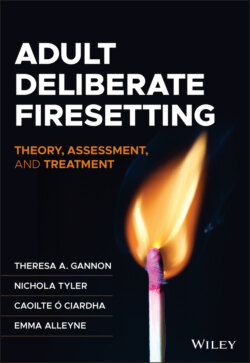Читать книгу Adult Deliberate Firesetting - Theresa A. Gannon - Страница 26
Conclusions, Ways of Working, and Future Directions
ОглавлениеOur review of the literature on the characteristics of individuals who have set deliberate fires as adults demonstrates a field that has expanded considerably in the past decade. There are clearly still gaps in our knowledge, and there remains a need for large representative studies and replication of older findings. However, the cumulative evidence appears to confirm that individuals who set fires reflect a population that—when considered in aggregate—have characteristics that set them apart from the general population across early developmental, psychopathological, and psychological domains. When compared with other justice-involved individuals, people who set fires appear to be broadly similar in terms of their sociodemographic and early developmental characteristics but may have specific vulnerabilities, risk factors, or treatment needs relating to their psychological and psychopathological characteristics.
We are encouraged by a growing move beyond examining the characteristics of homogenised groups of individuals who set fires towards examining the characteristics of subgroups of firesetting individuals. Given that the expansion of the literature that we note in this chapter, we believe that there is increasing scope to take a meta-analytic approach to synthesising knowledge on the characteristics of people who set fires. We strongly encourage practitioners and people working with populations of people who have set fires to routinely embed measures (e.g., Gannon et al., in preparation) of the psychological characteristics most clearly linked with firesetting behaviour in their assessment procedures. Doing so will help provide the foundation for future work on theory, assessment, and treatment of this population.
